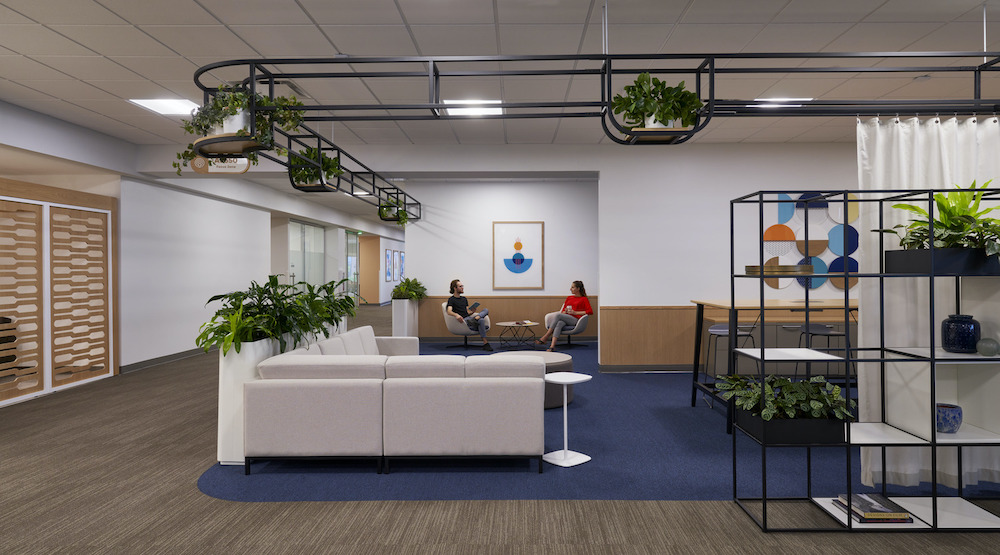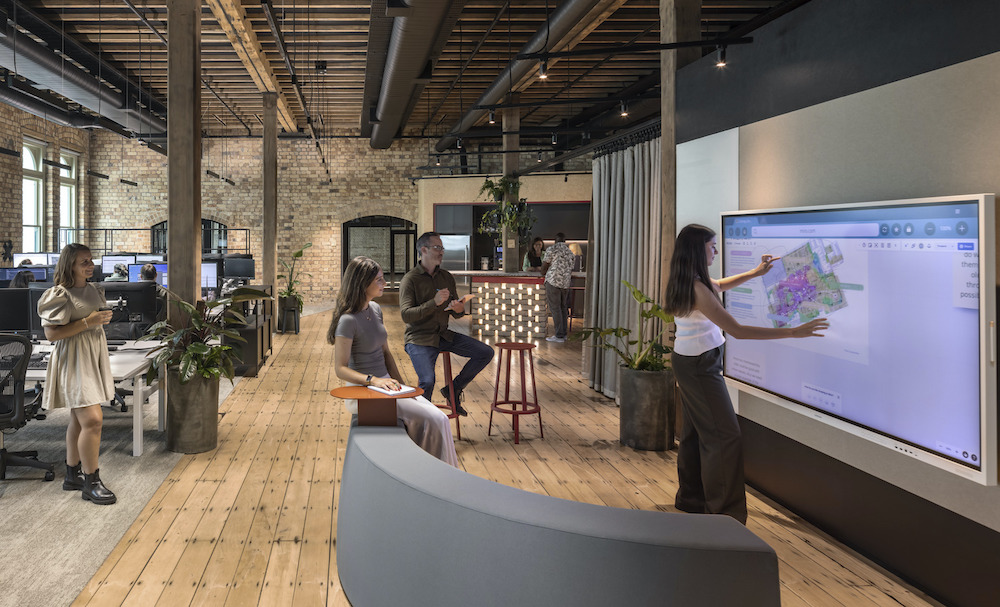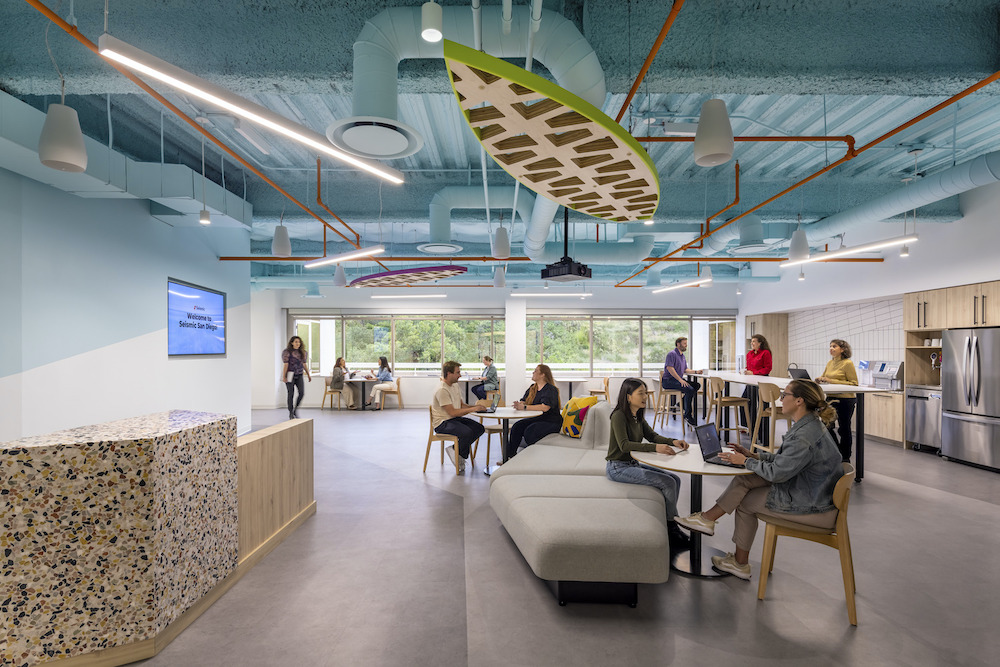Aimee Collins of Unispace shares how Gen Z will influence the future of workplace design.
Many Gen Z employees started their careers during the pandemic and as a result, their work experiences differ from that of any generation before. As employers plan out their return to office strategies, they need to contend with a flock of younger employees who won’t be returning to the office – they’ll be coming for the first time.
So how are companies catering their office designs, amenities and offerings to meet the needs of Gen Z? A recent report assessing the habits and motivations of more than 16,000 global employees and employers within the post-pandemic workforce provided some eye-opening revelations about Gen Z employees and how they may influence the future of workplace design.
The survey found that employees are slowly but surely coming back to in-person work, typically subscribing to a hybrid model that either encourages or mandates they spend a certain number of days in the office. On average, global employees across all market sectors currently spend about 3.5 days per week in the office. While there is a common perception that Gen Z prefers to work remotely or at home, we actually found the opposite. When asked, “Do you believe you will be working in the office four days a week again?” the results were surprising. 79% of those ages 18 to 34 agreed, compared with 67% of ages 35 to 44, and 51% of those 45 and older.

Building a Connection
To reinforce Gen Z office attendance, employers are putting in the work to create a new kind of workplace: one with amenities and experiences that cater to employee needs and enhance productivity and creativity. For our clients, designing an office to meet these needs means building spaces that enable collaboration and camaraderie, which Gen Z employees value deeply. In fact, 32% of younger employees surveyed said that when they come into the office, they would like to spend more time on collaborative and team work, and 64% said that working from home has made them value their time in the office more.
Furthermore, Gen Z generally views RTO as a positive. They’re the ones sitting in the work lounge with a laptop, eager to get to know their colleagues and develop their “work family.” When asked what they enjoy about going into the office, 31% of respondents ages 18 to 34 said they enjoy social interaction with colleagues, while 36% reported they missed socializing with colleagues when working from home.
Social connections are key to generating Gen Z employee loyalty and positive business results. Increased social interactions can facilitate beneficial work-related conversations that contribute to knowledge sharing, cross functional collaboration, and ultimately long-term company growth. A thoughtful office design can further enable these desired outcomes by providing workers with comfortable places to work and socialize, like a chic café communal area and relaxing open spaces where employees can take a break away from their desk at lunch, grab a coffee, or play a board game with colleagues. While these areas have long been considered a nice-to-have perk, they are now becoming essential amenities for employers looking to cater to younger employees, who prefer a vibrant and “buzzy” place to meet and socialize with their work friends.
Another major consideration for Gen Z-friendly office design is inclusivity. While younger employees value social interaction, they also need quiet spaces. These are especially important for neurodivergent employees, who may not prefer a work environment filled with sensory distractions. Additionally, Gen Z employees who began working during COVID haven’t had a lot of experience working within a loud, noisy office, so they may find a 2013-style open office plan distracting or even anxiety-inducing. When designing a Gen Z-focused office, companies need to create spaces with both introverts and extroverts in mind – something that is becoming the norm for future-focused employers.

A Focus on Technology
When designing for the generation raised on digital, technology is a prerequisite. Upon being asked what is most important for them in an office environment, 42% of younger survey respondents said a strong internet connection, 37% said a good tech set up, and 32% said access to natural light—all of which require investments in updated infrastructure for a seamless, intuitive experience.
These investments need to go well beyond making sure the internet works. For example, we work with clients who are rethinking the standard meeting room to enable employees in the office to easily connect with those working remotely via video call. While outfitting every meeting space with virtual capabilities is becoming a given, some companies are going beyond this, providing easy access to virtual offerings in casual collision areas as well. This tech integration enables employees to hop on impromptu video calls, share their screens or use digital white boards without having to pluan ahead or reserve a space.
Natural light may not seem like a tech consideration, but as mobile meetings become the norm even in the office, good lighting is paramount. Additionally, building an open office that caters to video meetings requires employers to have quality sound absorption or white noise machines in place to avoid interference and distraction when in a video meeting.
Digital room and desk booking tools are also essential add-ons, as 48% of employees surveyed said they do not currently have an assigned desk. To provide a hassle-free routine for hot-deskers, companies need to establish systems that provide employees with simple ways to know where they will be sitting and what rooms are available for meetings, so that they can better manage their time. For example, a system that allows someone to book a desk for two hours, then a conference room, then work from the café for the rest of the day, provides employees with a seamless experience and the ability to customize their environments based on the kind of work they need to do.
Choice is King
As many companies are learning, letting employees choose their own adventure is an essential part of the modern workplace. Our most successful offices have a little bit of everything – from a traditional cubicle to a large group table and a small focus room for heads-down work – enabling employees to choose when, where and how they work best.
Giving employees the autonomy to make those decisions and providing them with a diverse range of spaces that cater to their unique workstyles goes a long way to satisfy the needs of everyone in the workplace. The best part about designing an office with the needs of Gen Z in mind is that every other generation will benefit from these considerations as well.


